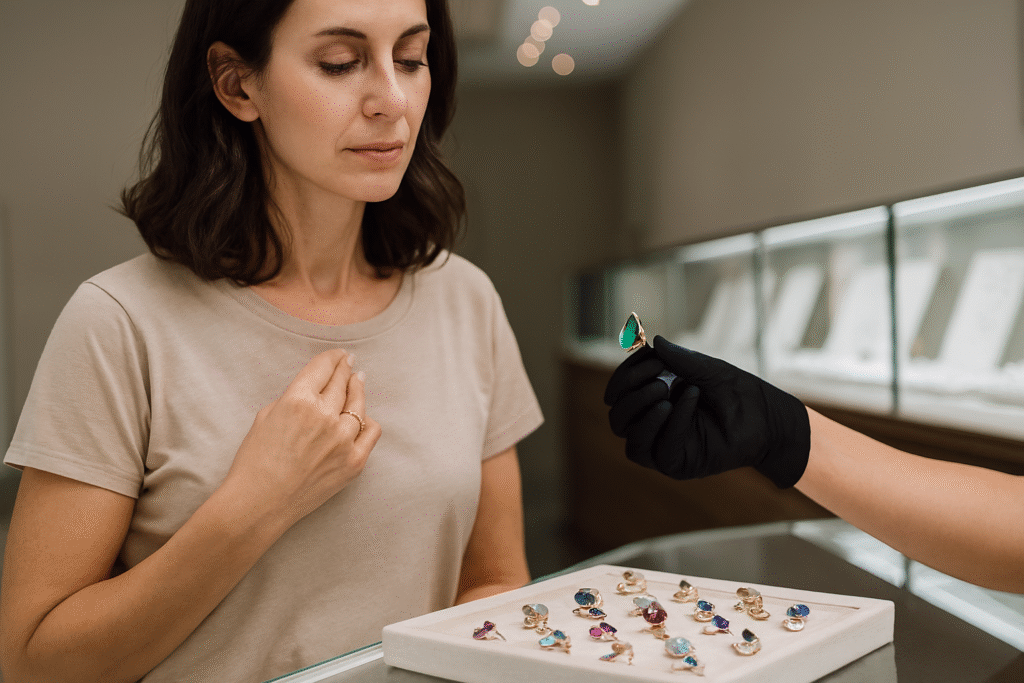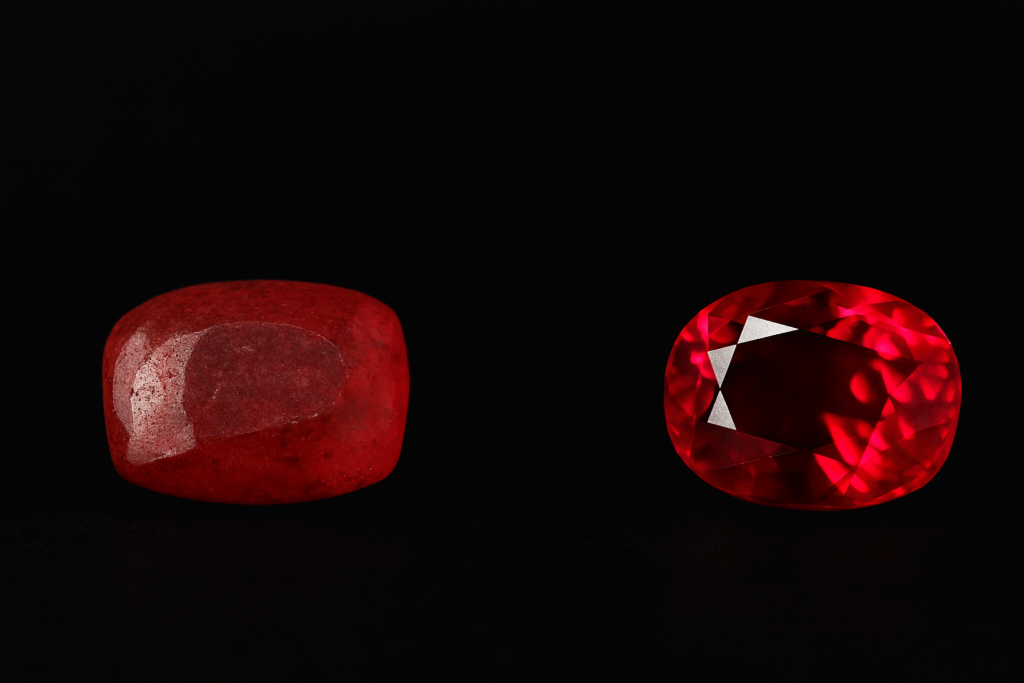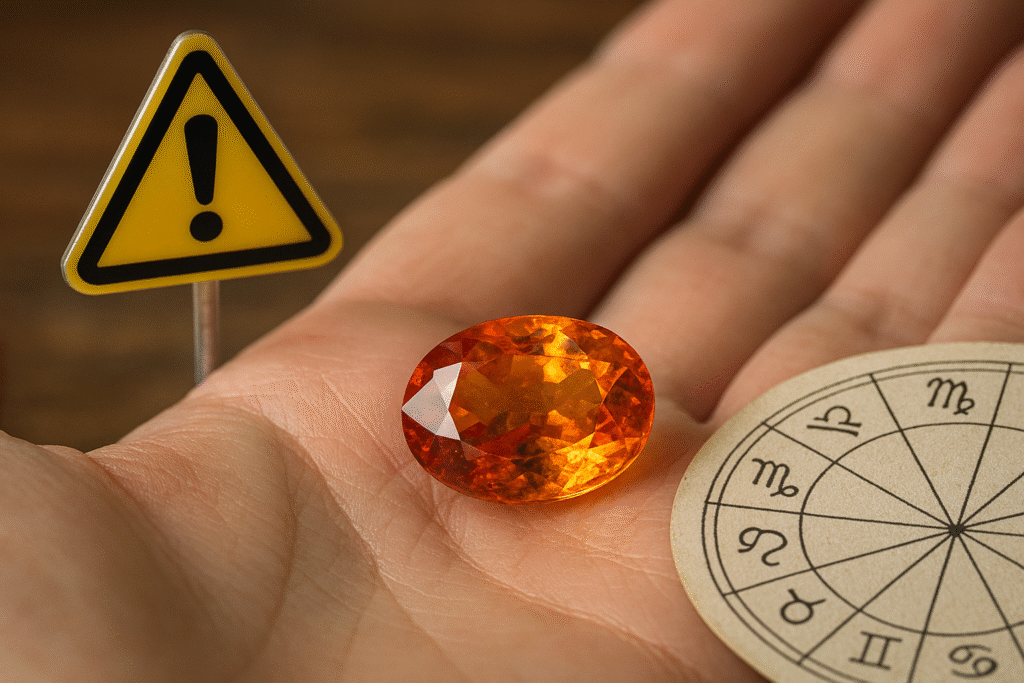Choosing a gemstone isn’t just about rarity or flawless clarity. You need the perfect gemstone for you—one that fits your style, skin tone, and lifestyle.
The key is prioritizing your personal needs over market trends.
A stone may appear flawless on paper. Yet if the color clashes with your skin tone, or the size is impractical, it becomes an accessory you’ll rarely wear. In fact, research shows nearly 60% of buyers regret gemstone purchases because they overlooked personal style or comfort. For deeper insights, see the guide on Gemstones by Color and Skin Tone.
Why the “Perfect” Stone Often Fails
- Skin Tone Mismatch: 62% of buyers select stones that look good in the store but clash with their natural skin tone. As a result, many never wear them. Learn how to avoid this mistake in Gemstone Shopping Tips.
- Lifestyle Conflicts: Large stones can be uncomfortable for daily wear. Therefore, 41% of buyers report avoiding rings they purchased due to discomfort.
- Market Trends vs Personal Taste: Rare or trending stones may look appealing. Yet, your comfort should come first, as explained in the post on Lifestyle Jewelry Choices.
Tips to Choose the Right Gemstone
- Test stones in natural light to check true color.
- Consider durability for everyday wear. For example, check ratings from the GIA Gemological Institute.
- Match size to lifestyle. Rings between 1–3 carats balance elegance and comfort. See examples in Gemstone Durability Ratings Guide.
- Factor in resale value, but above all, prioritize personal enjoyment.
- Try multiple stones before purchase. After all, handling stones yourself often reveals comfort, weight, and visual appeal.
Quote: “A gemstone is only perfect if it feels right for you.”
Q&A: Buying the Perfect Gemstone
Q: Should I buy a gemstone just because it’s rare?
A: Rare stones are tempting. Yet rarity doesn’t guarantee suitability. Therefore, choose a stone that complements your lifestyle.
Q: How do I match gemstones to my skin tone?
A: Warm skin tones suit yellow, orange, and red stones. Meanwhile, cool skin tones pair with blues, greens, and purples.
Q: How do I choose a practical size?
A: Rings between 1–3 carats are most comfortable for daily wear. For instance, many clients report higher satisfaction within this range.
Case Study:
A client chose a flawless 5-carat sapphire. However, she reported daily discomfort and eventually sold it. A 2.5-carat stone would have suited her lifestyle better. As a result, practicality proved more important than rarity.
Learn more:
. Gemological Institute of America: Gemstone grading and care
. American Gem Society: Gem buying guides and ethical sourcing
This comprehensive global cuisine FAQ covers everything about Asian and Western food and drinks. Whether you’re exploring international cooking techniques or discovering new flavors, this global cuisine FAQ answers the most frequently asked questions about world food traditions, ingredients, and culinary practices from both Eastern and Western cultures.
Global Cuisine FAQ: Asian & Western Food & Drinks
Food reveals cultural contrasts in clear and delicious ways. From cooking methods to dining customs, Asian and Western cuisines showcase unique traditions while also offering fascinating overlaps. Below, you’ll find answers to the most common questions about these culinary worlds.
Understanding Core Differences in Cuisine
1. What distinguishes Asian and Western culinary traditions?
Asian meals often rely on rice or noodles as a foundation. Flavors usually come from soy sauce, ginger, garlic, and a wide variety of spices. Meanwhile, Western gastronomy emphasizes bread, potatoes, and pasta. Dairy plays a key role, with butter, cream, and cheese giving richness to many dishes. Herbs such as rosemary and thyme highlight European cooking. These contrasts create distinct dining habits and flavor profiles.
2. Are Asian dishes always spicy?
No, not at all. While cuisines from Thailand and parts of India feature bold use of chilies, not every dish follows this pattern. Japanese sushi, Chinese dim sum, and Korean bulgogi are mild examples. In fact, Asian cuisines range from fiery to delicate, showcasing a rich palette of flavor.
Western Breakfast Staples and Comfort Foods
1. What constitutes typical Western morning meals?
Western breakfasts often include eggs, bacon, and toast. Pancakes, waffles, and cereal are also popular choices. These hearty starts are usually enjoyed with coffee, tea, or juice, providing both energy and comfort.
2. What represents popular Western comfort foods?
Comfort foods in the West speak to nostalgia and indulgence. Creamy macaroni and cheese, pizza, and hearty casseroles are favorites. Similarly, burgers and fried chicken have wide appeal. Because they are warm, filling, and familiar, these dishes strongly connect to emotion.
Cultural Dining Practices
1. Do all Asian cultures employ chopsticks?
No. Chopsticks dominate in East Asia—China, Japan, and Korea. However, Southeast Asia prefers spoons and forks, while India and parts of the Middle East often use flatbreads or hands. This diversity highlights how food customs closely reflect culture.
2. Why are some Asian foods fermented?
Fermentation preserves food while also enhancing nutrition and flavor. Korean kimchi, Japanese miso, and Indonesian tempeh show how tradition meets health benefits. These foods are valued not only for taste but also for their role in well-being.
Common Western Beverages
1. What beverages are common with Western meals?
Western dining often features water, soda, or fresh juice. Alcohol also has a strong cultural connection, with wine served at European dinners and beer central in North America. In the southern United States, sweet iced tea is a staple.
Dietary Flexibility and Options
1. Can one discover plant-based options easily?
Yes. Asian cuisines offer tofu stir-fries, lentil dals, and vegetable curries that are naturally vegetarian. Western food, similarly, embraces plant-based eating. Salads, vegetarian pastas, and vegan burgers have grown popular, making meat-free dining accessible worldwide.
Unique Asian Drinks to Explore
1. What are some unique Asian beverages?
Asia provides a wide variety of distinctive drinks. Bubble tea, from Taiwan, combines tea with chewy tapioca pearls. Japanese sake, made from rice, holds deep cultural meaning. Strong Vietnamese iced coffee, sweetened with condensed milk, adds a bold twist compared to Western brews.
Portion Sizes and Dining Habits
1. How do portion sizes compare?
Western meals often emphasize large servings, reflecting abundance. By contrast, Asian meals are usually smaller yet balanced, encouraging sharing and mindful eating. This creates different social experiences around the table.
The Art of Fusion Cuisine
1. Is it feasible to integrate Asian and Western flavors?
Absolutely. Fusion cuisine blends traditions in creative ways. For instance, teriyaki burgers combine Japanese flavors with American fast food, while kimchi tacos bring Korean spice to Mexican street food. These playful mixes show how food bridges cultures.



